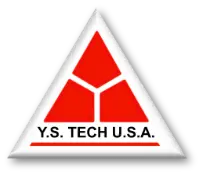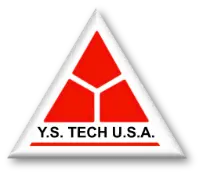Why custom thermal solutions trump in-house teams for billion-dollar EV charging companies
Introduction
As electric vehicles (EVs) take over the roads, the demand for efficient, reliable charging stations has never been greater. But there's one major challenge facing billion-dollar EV charging companies: managing the intense heat generated during rapid charging sessions. Should companies tackle this in-house, or is it smarter to bring in specialized thermal solution providers?
This article will break down why custom thermal solutions are often the preferred choice, examining the decision across three key areas:
-
Technological considerations: Why custom thermal companies have the edge in advanced solutions.
-
Economic factors: How outsourcing is more cost-effective and scalable.
-
Strategic advantages: The freedom to focus on core growth and gain a competitive edge.
Let’s explore how these two approaches compare on each front and why custom solutions are often the strategic choice for EV charging giants.
Technological considerations
Advanced thermal management solutions
Custom thermal solution providers bring specialized cooling technologies that are designed for high-demand environments. Companies like Advanced Cooling Technologies (ACT) offer solutions like sealed enclosure cooling and Pumped Two-Phase cooling, built to handle the intense power densities of EV charging. ACT’s systems, for instance, can dissipate over 50kW of heat using air-cooled systems alone, setting a standard for efficient, reliable cooling.
In-house limitations on advanced cooling
In-house teams may manage basic cooling requirements but often lack the specialized expertise and resources to develop solutions capable of handling the heat demands of high-powered EV charging. While they can produce moderate cooling systems, scaling these solutions to support peak efficiency is challenging, leading to possible overheating and performance issues under heavy usage.
Electromagnetic interference (EMI) shielding
Custom thermal companies also provide essential protections like electromagnetic interference (EMI) shielding, which shields the sensitive internal components from environmental hazards like dust, moisture, and interference. This added layer of protection ensures consistent performance, crucial in the demanding world of EV charging.
In-house EMI constraints
Developing high-quality EMI protection is often beyond the capabilities of in-house teams, who may lack both the resources and expertise required. Without robust EMI shielding, in-house solutions are vulnerable to interference that can disrupt charging station performance, jeopardizing reliability and customer satisfaction.
Economic factors
Cost-effectiveness and scalability with outsourcing
Outsourcing to specialized thermal solution providers is cost-effective. These firms spread R&D costs across multiple clients, allowing EV companies to access advanced technology without the significant overhead of developing it in-house. This scalability is a huge advantage for charging networks needing rapid, widespread deployment.
In-house development costs
Building and maintaining an in-house thermal team is a substantial investment. Salaries, training, and ongoing development add up quickly, and without the ability to spread costs, the expenses are high. Additionally, maintaining up-to-date systems for every station can become financially unsustainable, especially as technology advances and infrastructure grows.
Funding and investment efficiency
With both public and private sectors investing heavily in EV charging infrastructure, maximizing these funds is crucial. For example, the U.S. government’s $7.5 billion investment highlights the need for reliable, proven technology, which outsourced thermal firms can deliver efficiently. Partnering with these firms helps companies focus their capital on growth rather than on thermal management.
In-house budget constraints
Limited budgets make it difficult for in-house teams to invest in the continuous innovation needed to stay current. These budget restrictions can create a “bottleneck” in developing reliable solutions, leaving EV companies at a disadvantage against competitors who prioritize cutting-edge thermal technologies.
Strategic advantages
Focus on core competencies
Outsourcing thermal management allows EV charging companies to keep their focus on growth, customer service, and infrastructure expansion. This freedom to focus on core competencies is a strategic win, especially in a rapidly growing industry. Companies like Tesla exemplify this strategy, partnering with thermal experts so they can concentrate on expanding their networks and optimizing customer experiences.
In-house resource strain
Relying on an in-house thermal team can spread resources thin. Managing thermal solutions internally can consume valuable time and focus that could be used for broader, growth-driven goals, such as rolling out new stations or innovating charging speed and convenience for users.
Innovation and competitive edge
Custom thermal providers offer tailored technologies that give EV charging companies a competitive edge. With custom solutions, companies can maintain operational efficiency while ensuring consistent reliability—an essential factor for keeping users loyal and building a strong reputation in the industry.
In-house innovation bottlenecks
An in-house team often lacks the funding and flexibility to prioritize rapid innovation. While they can handle day-to-day cooling needs, their resources are stretched too thin to explore new technologies. This limitation places companies relying on in-house solutions at a disadvantage against competitors who invest in advanced, outsourced cooling systems.
Conclusion
When it comes to thermal management, outsourcing custom solutions provides billion-dollar EV charging companies with clear technological, economic, and strategic benefits. Specialized thermal management firms bring the expertise, scalability, and innovation necessary to handle high-powered EV charging demands. By opting for these partnerships, companies can maintain their focus on growth, leverage economies of scale, and ensure a reliable experience for users.
Is in-house thermal management sustainable for companies aiming for rapid growth? Will outsourced solutions continue to set the standard in thermal management? And how will these decisions shape the reliability of EV infrastructure?



